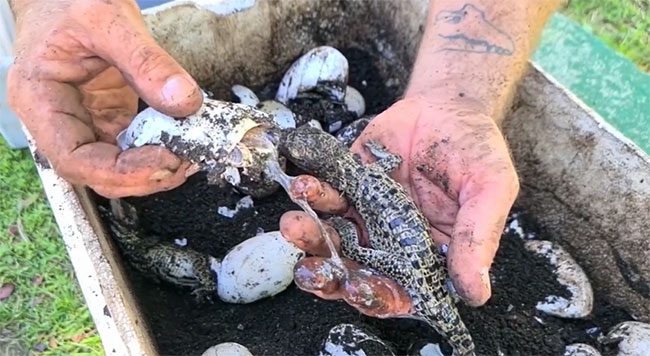The Cuban crocodile is currently classified as “critically endangered” and is found only in a small range within the Zapata Swamp.
Researcher Etiam Perez releases a crocodile in the Zapata Swamp. (Video: Reuters)
Wading waist-deep in the murky waters of the Zapata Swamp in Cuba, researcher Etiam Perez released a young crocodile that had been seized from poachers back into the wild. “It’s a small victory in a larger battle,” he said.
Scientists report that the Cuban crocodile—an endemic species found only in the Zapata Swamp on Cuba’s Isle of Youth—is currently listed as critically endangered in the Red Book and has the smallest distribution range of all living crocodile species.
Illegal hunting and breeding with American crocodiles have disrupted the genetic integrity of the species, threatening the pure populations here for decades. Additionally, climate change is altering the sex ratio of hatchlings, posing a new threat.
Although the Cuban government has protected nearly the entire vast area of the swamp, which many consider the best-preserved region in the Caribbean, it is still not enough.
Scientists estimate that around 4,000 Cuban crocodiles remain in the wild, but due to their preference for relatively small wetland habitats, a climate-related disaster—becoming increasingly common globally—could wipe out the species’ population.
Concerns about these issues decades ago prompted the Cuban government to implement a breeding program: each year, several hundred artificially hatched crocodiles are released into the wild. Researchers like Perez also rescue and release crocodiles from poachers, an effort that has helped reduce poaching of this species.

Climate change is altering the sex ratio of hatchlings, posing a new threat.
The sale of crocodile meat in Cuba is tightly controlled by the state. Only crocodiles with physical defects or hybrid genetics are permitted to be slaughtered in restaurants. However, illegal markets can still be found in some areas, particularly around the swamp.
The International Union for Conservation of Nature, which listed the species as critically endangered in 2008, has stated that estimates of the Cuban crocodile population need to be updated and expressed concerns about the species’ limited habitat.
Harsh conditions are a constant challenge in Cuba. At Zapata, this is particularly concerning as newly hatched crocodiles are released to explore their new world.
Scientists indicate that young crocodiles will quickly become fierce and formidable predators, potentially reaching lengths of nearly 5 meters when fully grown.
“They are very curious creatures. When you see one in the wild, it’s not hard to recognize it as a Cuban crocodile because it will come towards you,” said veterinarian Gustavo Sosa.


















































